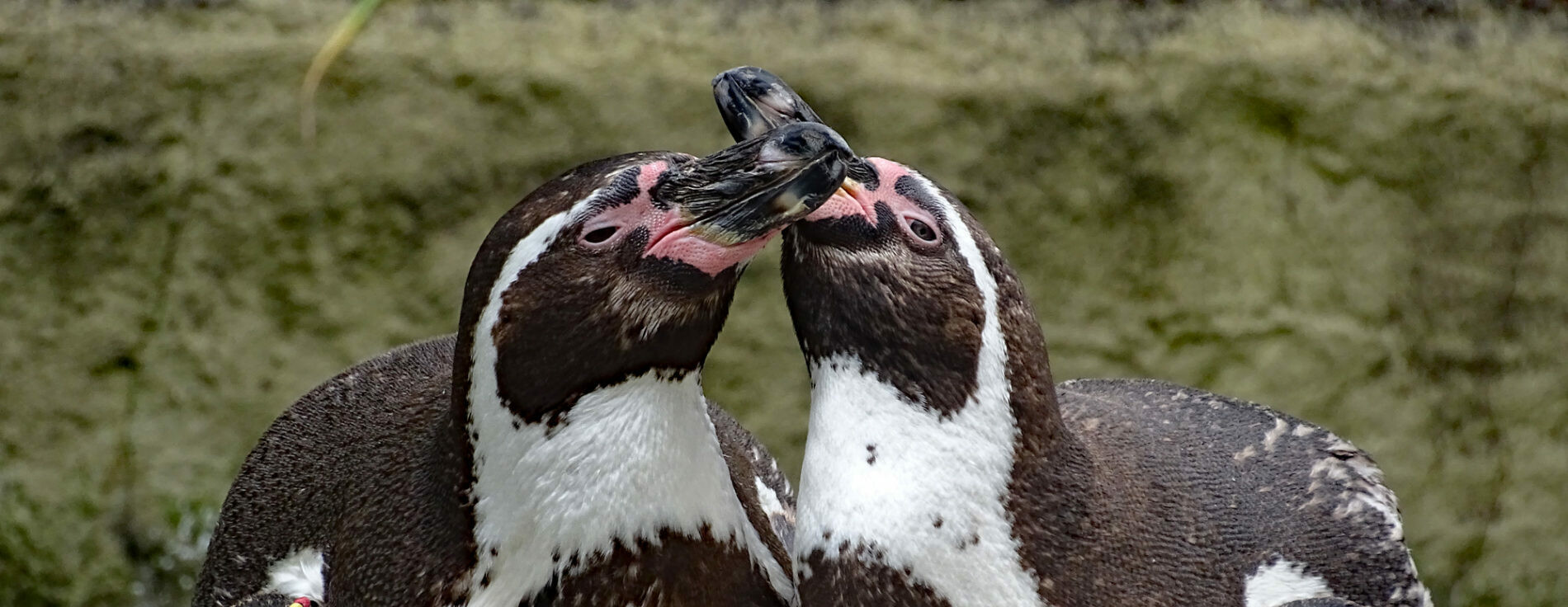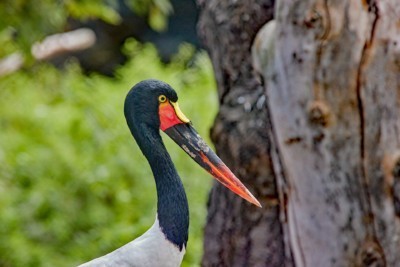Species conservation in the Zoo
As a scientifically managed zoo, we are not just a place for recreation and leisure. Rather, we see ourselves as a place of learning, and regard nature and species conservation as one of our core tasks. Our aim is to get visitors interested in species diversity, and thereby raise awareness of the need to protect these species and conserve their natural habitats. We do this on the one hand by enabling visitors to experience the animals for themselves, and on the other through targeted information and events. Another important pillar of our work is the breeding and keeping of endangered species.
Animals as ambassadors
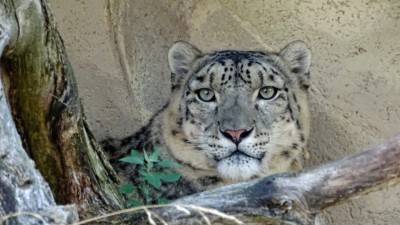 The greatest strength of any zoo is its animals. This is the reason why millions of visitors all over the world flock to zoos every year - to see, observe and experience animals. At the same time, zoo animals are ambassadors for their wild cousins and their often endangered habitats. Only once people can experience animals for themselves and grow to know and love them do they feel a desire to protect them.
The greatest strength of any zoo is its animals. This is the reason why millions of visitors all over the world flock to zoos every year - to see, observe and experience animals. At the same time, zoo animals are ambassadors for their wild cousins and their often endangered habitats. Only once people can experience animals for themselves and grow to know and love them do they feel a desire to protect them.
The aim of modern zoos is to build up self-sustaining and genetically healthy populations. Capturing animals in the wild plays only a minor role here, and mainly serves as a means of rescuing species that are on the brink of extinction or to increase genetic variability. In order to build up and maintain such populations, animals are managed in studbooks.
Studbooks
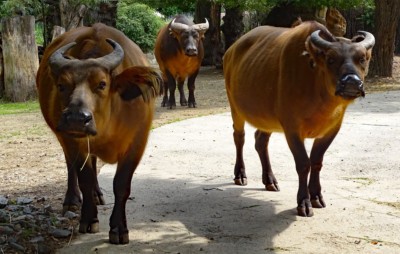 Dresden Zoo currently maintains two studbooks. We are responsible for the ESB for the saddle-billed stork (Ephippiorhynchus senegalensis) and the EEP for the African buffalo (Syncerus spec.).
Dresden Zoo currently maintains two studbooks. We are responsible for the ESB for the saddle-billed stork (Ephippiorhynchus senegalensis) and the EEP for the African buffalo (Syncerus spec.).
Building up healthy, self-sustaining populations like this can also create a reserve of species that are critically endangered or even extinct in the wild. Even though many things need to be taken into account and considered when reintroducing species back into the wild, species reintroduction can help, and has in the past helped, to prevent species from dying out completely.
The EAZA Ex-situ Programme coordinates breeding activities for over 150 species across Europe. The aim of the programme is to build up healthy, sustainable populations within European zoos. The EEP was established in 1985.
European Studbook
A European Studbook programme is a less intensive variant of an EEP. Breeding activities for 140 species are coordinated in the ESBs.
Awareness-raising
Information boards and species conservation yurt
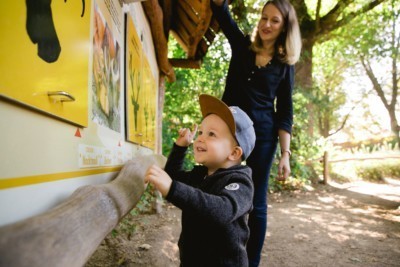 Visitors can find out all about nature and species conservation, as well as the threat status of the respective species, on various information boards and signs located throughout the Zoo. From Easter to October, visitors can also take a look inside our species conservation yurt, where we provide information on our involvement in species conservation and the work of the projects we support.
Visitors can find out all about nature and species conservation, as well as the threat status of the respective species, on various information boards and signs located throughout the Zoo. From Easter to October, visitors can also take a look inside our species conservation yurt, where we provide information on our involvement in species conservation and the work of the projects we support.
Animal campaign days and events
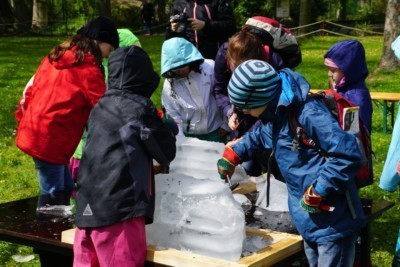 Many of our animal ambassadors have their very own global campaign days dedicated to them by various NGOs, which we regularly participate in. We regularly celebrate World Penguin Day, for example, and on World Giraffe Day we provide information on the threat level facing the world’s tallest land mammals. On these days, visitors can learn all about the respective animal at our campaign stands and become familiar with the subjects of nature and species conservation through fun participatory and craft activities. You can find an overview of the animal campaign days we support in our events calendar
Many of our animal ambassadors have their very own global campaign days dedicated to them by various NGOs, which we regularly participate in. We regularly celebrate World Penguin Day, for example, and on World Giraffe Day we provide information on the threat level facing the world’s tallest land mammals. On these days, visitors can learn all about the respective animal at our campaign stands and become familiar with the subjects of nature and species conservation through fun participatory and craft activities. You can find an overview of the animal campaign days we support in our events calendar
Animal keeper hangouts
Our animal keeper hangouts provide a further opportunity to talk to visitors about the animals, their needs, and the threats they face. This direct contact with visitors allows them to experience the animals in a fun and engaging way while also learning about the animals and species conservation.
discover more
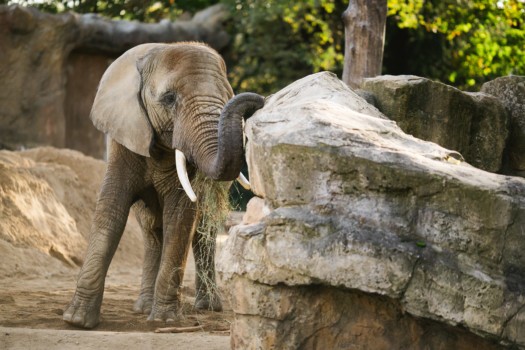
The Conservation Euro
The Conservation Euro Your contribution to nature Nature and species conservation are crucial ...
The Conservation Euro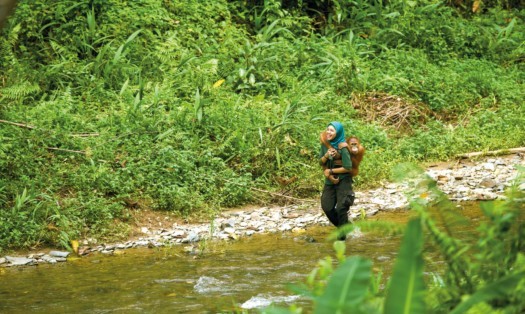
Species conservation in the wild
In addition to our activities within the Zoo, we are also actively involved in promoting nature and ...
Species conservation in the wild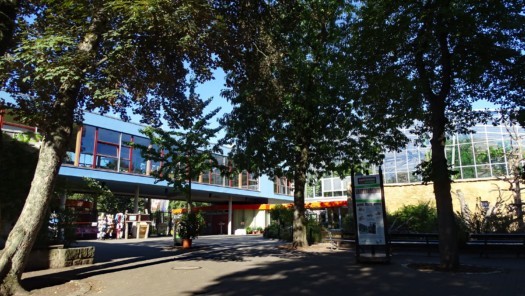
About us
Dresden Zoo is one of the oldest zoos in Germany, as well as one of the region’s most popular leisure ...
About us